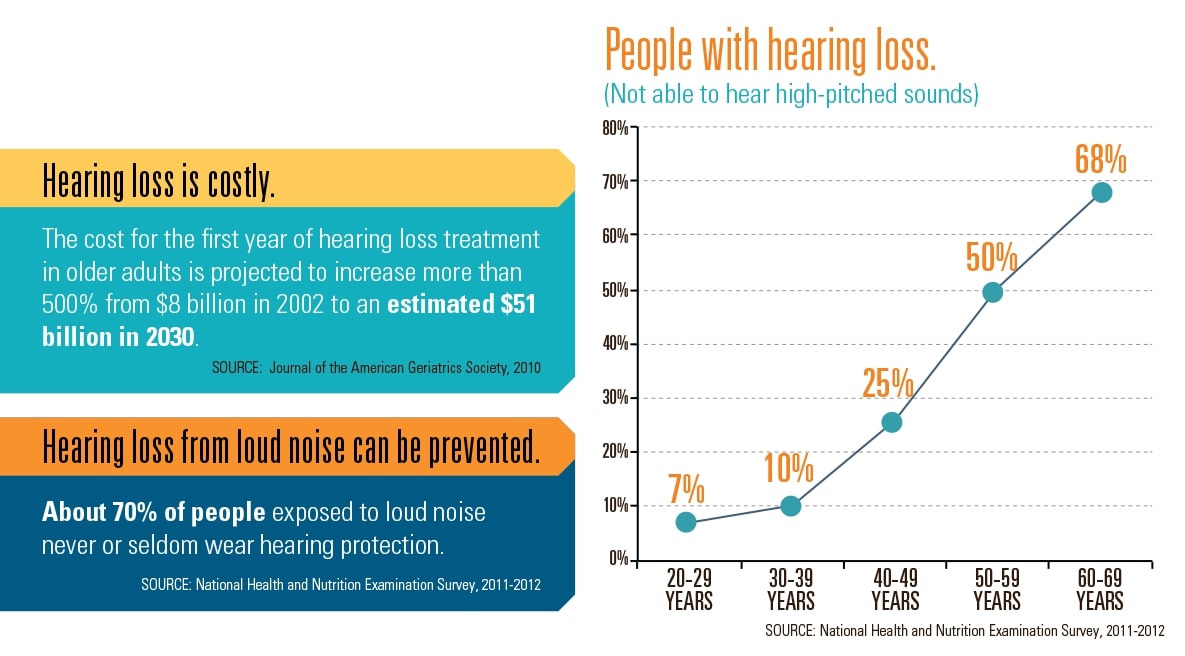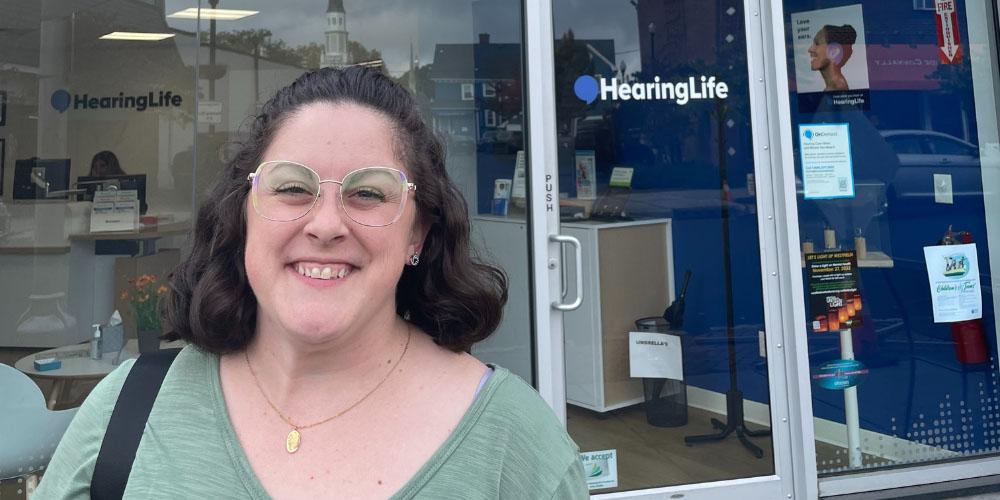Key points:
-
Hearing loss is very common, affecting about 15% of all US adults. In older adults, nearly two-thirds are affected.
-
Ringing in the ears, called tinnitus, is also common. About 11% of US adults report at least occasional ear ringing.
-
The good news? Most people who wear hearing aids are satisfied with them, according to 2022 survey data.
Hearing loss is the third most common chronic physical condition behind arthritis and heart disease, affecting people of all ages. It is especially common among older adults and veterans.
This is what hearing loss looks like by the numbers from a variety of sources:
Hearing loss statistics

with their hearing.
Hearing loss facts in general
According to the National Institutes of Health, the Hearing Loss Association of America (HLAA) and the World Health Organization:
- About 15% of American adults report some degree of hearing loss.
- The prevalence of hearing loss is twice as common as diabetes or cancer.
- Age is the strongest predictor of hearing loss, with prevalence increasing steadily once people reach 60.
- Globally, nearly 2.5 billion people are projected to have hearing loss by 2025. About 700 million of these people will need hearing devices like hearing aids.
Hearing loss statistics in older adults
It's well known that hearing loss is more common among older adults, known as presbycusis.
- A 2023 survey found that nearly two-thirds of adults 71 and older had hearing loss. By age 90, nearly everyone (96.2%) had hearing loss.
- The same survey found that only 29.2% of those with hearing loss used hearing aids.
- Adult men in their 50s are three times as likely to have hearing loss than women of the same age, but as they age, hearing loss rates become similar among the sexes, studies show.
- As women age, they may have more difficulty hearing at lower frequencies than do men. Overall, though, age-related hearing loss most often causes hearing loss in the high frequencies.

Noise-induced hearing loss
One of the most common ways people damage their hearing is through excessive noise exposure, leading to noise-induced hearing loss (NIHL). About one out of every five workers is exposed to hazardous noise in the workplace. The CDC reports these numbers on NIHL:
- Approximately 12% of all workers have hearing difficulty.
- About 8% of all workers have tinnitus.
- About 20% of noise-exposed tested workers have a material hearing impairment that impacts day-to-day activities.
Stats on hearing loss in children
- Approximately 3 of every 1,000 children in the United States are born with a detectable hearing loss in one or both ears. Most children in the U.S. receive newborn hearing screening.
- 15% of school-age children (6-19) have some degree of hearing loss. About 20% of teens do.
- An estimated 12.5% of children and adolescents aged 6–19 years have suffered permanent damage to their hearing from excessive exposure to noise, according to the CDC.
- Even a mild hearing loss can cause a child to miss 50 percent of classroom instruction, according to HLAA.
- Globally, hearing loss affects about 100 million children, a number that is projected to increase, especially among developing countries, according to a review in BMC Public Health.
Hearing loss among veterans
On-the-job exposure is particularly common among U.S. Veterans, who can access VA services for hearing aids. According to the HLAA:
- Hearing loss and/or tinnitus is the most common service-connected disability among U.S. Veterans.
- 2.7 million veterans receive hearing care or disability related to hearing loss.
- Half of all blast injuries experienced by veterans resulted in permanent hearing loss.
Tinnitus statistics
Hearing loss and tinnitus are often related conditions and are very common in older adults and veterans.
However, statistics about its prevalence vary.
In the US, the most recent research determined that tinnitus affects about 11% of adults, according to a 2024 analysis published in The Lancet Regional Health journal.
Meanwhile, a 2020 cross-sectional study of European older adults found high levels of tinnitus in the general population (about 20%), and that number doubled among older adults who had hearing loss.
A German study showed tinnitus was very common (around 1 in 4 people reported experiencing it), As the authors noted: "Tinnitus is a common problem. We found that one in four people in our cohort suffers from it. In general, men are affected more often than women. As hearing loss progresses, the prevalence of tinnitus increases. Despite the high prevalence of tinnitus, only a minority of patients seem to consult a doctor."
Hearing aid and hearing care statistics
How many people wear hearing aids?
2022 MarketTrak data shows that:
- Satisfaction with hearing instruments increases with each survey. In 2022, 83% of survey respondents in were satisfied with their hearing aids.
- The average age of a person buying hearing aids is 60.
- Nine out of ten people who wear hearing aids report "high satisfaction" with their hearing care providers (audiologists and hearing instrument specialists).
- People wait about four years from the start of hearing difficulties to getting their first hearing aid, a time gap that has gotten shorter (it used to be six).
- Stigma has decreased over time. Compared to older surveys, far fewer people report feeling embarrassed or rejected due to their hearing aids.
Hearing loss and health issues
The MarkeTrak 2022 survey also found that those with hearing difficulty have higher rates of many common conditions and are over 3.5 times more likely to have tinnitus, cognition/memory issues, and falling and balance issues. People who don't wear hearing aids are at a greater risk of depression that increases with severity of hearing difficulty.
Additionally:
- Studies suggest those with heart disease have a greater incidence of hearing loss than those without.
- Hearing loss is twice as common in people who have diabetes than in those without.
For all these reasons, hearing aids are good for your health and your mind.
The above is the interpretation of Hearing Loss Statistics 2024: Prevalence and Impact provided by Chinese hearing aid supplier Shenrui Medical. Link https://www.srmcm.com/Blog/Hearing_Loss_Statistics_2024_Prevalence_and_Impact.html of this article is welcome to share and forward. For more hearing aid related information, please visit Blog or take a look at our Hearing aids products















